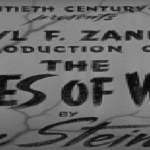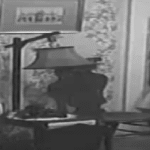Few films have endured in the public consciousness quite like Frank Capra’s It’s a Wonderful Life. Released in 1947 and starring James Stewart in one of his most iconic roles, the film has become synonymous with holiday viewing, moral clarity, and emotional depth. But It’s a Wonderful Life is more than just a Christmas classic. It is a profound meditation on the human experience—on sacrifice, self-worth, community, and the quiet heroism of everyday life.
A Story Rooted in the Ordinary
At its core, It’s a Wonderful Life tells the story of George Bailey, a small-town man whose dreams of escaping Bedford Falls are repeatedly deferred by circumstances and his own moral compass. As the eldest son in the Bailey family, George shoulders responsibility from a young age—saving his younger brother from drowning, taking over his father’s modest Building and Loan business, and continually putting the needs of others before his own.
The narrative structure is unique for its time. The film opens on Christmas Eve, with George on the brink of suicide. His desperate prayers are heard in heaven, prompting a second-class angel named Clarence to intervene. To earn his wings, Clarence must help George rediscover the value of his life. The bulk of the film unfolds as Clarence is shown George’s life from childhood to adulthood—highlighting the ripple effect of George’s choices and sacrifices.
This approach gives It’s a Wonderful Life a mythic, almost Dickensian quality. Like Ebenezer Scrooge in A Christmas Carol, George is granted a supernatural lens through which to reevaluate his life. But unlike Scrooge, George has always been a good man—his journey is not about transformation but recognition. His story is a testament to the unseen worth of quiet perseverance.
Themes That Resonate Across Generations
One of the most powerful aspects of It’s a Wonderful Life is its exploration of self-worth and despair. George is not a flawed antihero nor a grandiose figure; he is relatable because he is ordinary. He yearns for adventure, for accomplishment, for significance. Yet, again and again, he chooses others over himself. These decisions gradually chip away at his sense of purpose.
By the time the film reaches its pivotal moment—George contemplating suicide on a snowy bridge—the audience has come to understand the depth of his despair. He feels like a failure, trapped in a life he never chose. In this moment, the film bravely addresses mental health, long before such topics were commonly explored on screen.
Clarence’s intervention, and the sequence where George sees what Bedford Falls would be like had he never been born, is one of the most impactful stretches in cinematic history. The town is dark and soulless without him. Lives have unraveled. The community is poorer—spiritually and materially—without his quiet acts of kindness. In essence, George’s life has mattered profoundly, even if he never became the globe-trotting architect he once dreamed of being.
The film’s message—that our worth isn’t measured by fame or fortune, but by the lives we touch—is both timeless and radical. In an age of individualism and material success, It’s a Wonderful Life reminds us of the power of humility, kindness, and sacrifice.
Jimmy Stewart’s Defining Role
James Stewart’s portrayal of George Bailey is widely considered one of the finest performances in American film. Coming off his service in World War II, Stewart brought a new depth to his acting. His George is earnest, humorous, and heartbreakingly human. Stewart doesn’t play George as a saint, but as a man struggling to reconcile his ambitions with his reality.
Capra, too, was returning to Hollywood after the war, and the film feels like a reflection of both men’s experiences. There is a darkness beneath the surface—a melancholy that balances the film’s more sentimental moments. Stewart’s raw performance during the scene where George breaks down in prayer at the bar is deeply moving and reportedly drawn from his own post-war emotional struggles.
Supporting Cast and Character Depth
The ensemble cast adds richness to the world of Bedford Falls. Donna Reed as Mary Hatch, George’s steadfast and loving wife, grounds the story with warmth and quiet strength. Mary is often the emotional backbone, supporting George even when his spirit begins to crumble.
Lionel Barrymore plays the villainous Mr. Potter, the greedy banker whose desire to monopolize the town stands in direct contrast to George’s selflessness. Potter is a classic Capra antagonist: a symbol of unchecked capitalism and moral decay. He is a man who measures success solely in wealth, and his inability to understand George’s values makes him all the more menacing.
Clarence the angel, played with endearing clumsiness by Henry Travers, is more than comic relief. His gentle guidance, mixed with a touch of heavenly bureaucracy, provides the film with its redemptive arc. Clarence is not just there to save George—he’s there to show the audience that even small acts of grace can have celestial significance.
A Rocky Road to Classic Status
Surprisingly, It’s a Wonderful Life was not a major success upon its release. Though it received five Academy Award nominations, including Best Picture and Best Actor, it struggled at the box office. Critics were divided, and the film was even investigated by the FBI, which bizarrely accused it of promoting communist ideals due to its criticism of bankers.
Its transformation into a holiday staple happened almost accidentally. In the 1970s and 1980s, the film entered the public domain due to a clerical error, allowing television networks to air it freely. It was shown repeatedly during the holiday season, and gradually, audiences began to embrace it. By the 1990s, it had firmly established itself as an essential Christmas film and a cultural treasure.
Legacy and Cultural Impact
Today, It’s a Wonderful Life is preserved in the National Film Registry and regularly appears on lists of the greatest films of all time. Its themes have been echoed in countless stories, from holiday specials to Hollywood dramas. But what sets it apart is its emotional honesty and moral clarity.
It’s a film that dares to confront hopelessness while offering genuine hope. It doesn’t rely on spectacle or grand gestures. Instead, it builds its power through everyday struggles, human connection, and the simple yet profound idea that no one is insignificant.
Conclusion: The Life That Truly Was Wonderful
Frank Capra once said, “It’s a Wonderful Life sums up my philosophy of filmmaking: First, to exalt the worth of the individual, to champion man.” And that’s exactly what the film does.
More than seven decades after its release, It’s a Wonderful Life continues to remind us that our existence matters—even when we can’t see the full picture. It’s a film that asks us to believe, not in magic or miracles, but in each other. And perhaps, in our darkest moments, that’s the kind of miracle we need most.







